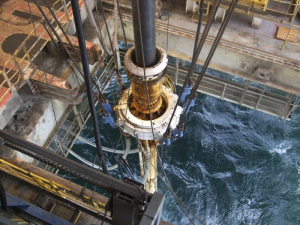The mission of the UH Cullen College of Engineering is to serve the Greater Houston community by establishing innovative and industry-relevant engineering programs that help to drive the economy forward in the state of Texas. The Cullen College has succeeded at this mission in no small part due to the support of individual donors and corporate sponsors.
This was especially true for the Cullen College’s subsea engineering program, which was established in direct response to industry workforce needs and with overwhelming support from leaders in the energy industry across the Houston region and around the world.
In an effort to bolster private support for higher education, the Texas Higher Education Coordinating Board established TRIP – the Texas Research Incentive Program. It provides state institutions funds that match private gifts or endowments at a certain percentage for the purpose of enhancing research activities.
The combination of gifts and matching state funds is a winning one, and most recently the college reaped the benefits from National Oilwell Varco and TRIP to the tune of $500,000 from NOV alone, gifted to the Cullen College’s subsea engineering program. The gift was paid in several installments, and TRIP just matched the first installment of $150,000 at 50 percent ($75,000) – with future matches to come as well.
The funds are already being put to use in the subsea engineering program, according to program director Matt Franchek. “[The money] NOV has given us, we’re able to magnify that gift thanks to the state of Texas, and we’re able to put it to use in the classroom for the students.”
Specifically, the program has purchased several high-performance computing clusters available for student use. Additionally, the program purchased a significant amount of memory for the clusters to “dump” their information on – and then refer back to as they perform more calculations. Franchek calls the infrastructure a “computational city,” and it’s available to all subsea engineering students.
For Franchek, the computers are more than just a tool – they’re a pathway to a new method of engineering. “We want to see a computational approach to subsea engineering called analysis-led design,” he said.
When subsea engineers design a structure, Franchek said, “they’re doing lots of computations, and for these [structures] to grid out correctly and the computer to solve the code correctly, it’s huge. The equipment we build can be 60, 70, 100 feet tall, so to simulate that is a big deal. Without the gift from NOV, we would never be able to do this.” The new high-powered clusters are so powerful with computational calculations, Franchek said, that “when you hit return, you have to duck – the answer comes back so quick.”
The clusters themselves are housed at the Energy Research Park (ERP), but students in the Cullen College can access them through the Dell workstations at the Engineering Computer Center.
Franchek says that the high-powered clusters are only the beginning of a long-term plan for the subsea engineering program to create a computational infrastructure capable of handling multiple, massive simulations and predict optimal designs that fit a given project. This, he says, will then allow students to focus more seriously on which of the computer-designated optimal designs will work best in practice, and why.
